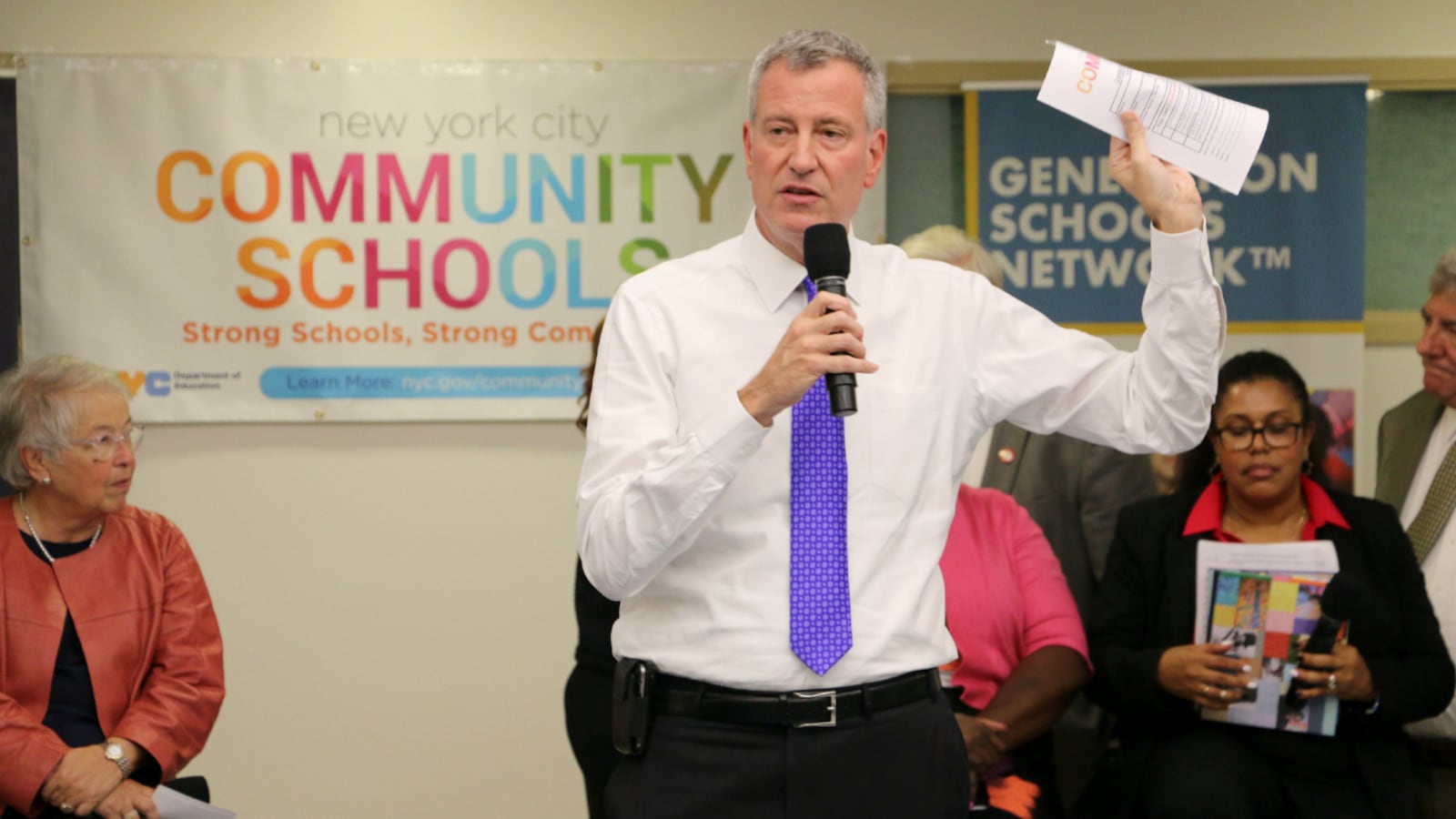Despite Mayor Bill de Blasio’s ambitious promise to transform struggling schools, some of New York City’s bottom-ranked schools can backslide this year and still hit new goals that the city has set for them.
For the first time, the city has told schools in its $582 million “Renewal” program to aim for test scores, graduation rates, or attendance rates that fall within a certain range, rather than hit a specific target. But some ranges include goals that are below the schools’ current levels.
For instance, Bronx Collegiate Academy posted a 67 percent graduation rate last year. This year, its city-issued goal is to land between 63.6 and 81.9 percent — meaning its graduation rate can go down and still fall within its target range.
At the Bronx’s J.H.S. 123, the goal is for students to earn an average score on the state English tests of between 2.3 and 2.45 — despite already achieving a 2.42 average last year. (Students must earn a 3 or higher on the 4-point scale to be considered proficient.)
The latest round of goals continues a pattern of modest targets for schools in de Blasio’s signature school-turnaround program, even as the city loads them with extra social services, extended hours, and bigger budgets. Some experts say the goals are appropriate for schools that started so far behind, and note that school turnaround can take years. But others say the goals set a low bar, and question whether they are designed to make it easier for the de Blasio administration to claim its pricey program was a success.
What’s more, the new goal ranges have created some confusion among school leaders about what they are expected to achieve and what will happen if they don’t.
“If [the goals] really are supposed to be guiding stars and shaping what schools are doing on a day-to-day basis,” said Teachers College professor Aaron Pallas, “fuzzy ranges with unclear accountability consequences is not the way to do it.”
The goals are one of the factors officials consider when deciding whether schools in the Renewal program have made sufficient progress or should instead be closed or merged with other schools.
But if they are meant to provide low-performing schools with clear targets and a sense of urgency, the new ranges have instead created some confusion. The city offered online trainings on the goals, but some school leaders remain unsure of what’s expected of them.
“What we’ve been told is: ‘You need to reach for the upper range of your benchmark,’ said an administrator at a Brooklyn Renewal school, who spoke on the condition of anonymity. “It’s not a fixed number, so what’s good enough and what isn’t?”
Eric Ashton, the education department’s executive director for accountability, acknowledged that the new goal ranges had left some people confused.
Still, he defended them as “rigorous and realistic,” and said schools are expected to aim for the upper end of the range. The ranges are meant to encourage schools to focus on making progress rather than fixating on a single number, he added
“If you just have one number as a target then it’s all or nothing,” Ashton said. “We don’t want it to be all or nothing.”
The tweaks partially reflect the political dilemma the education department faces when assigning goals to the city’s lowest-performing schools: Overly modest goals could invite criticism that such small gains do not justify the program’s hefty price tag, while overly ambitious goals could set the program up for failure.
Yet despite their caution, officials have fallen into both traps.
Early goals they set for Renewal schools required such slight improvements that a top state official called them “ridiculous.” Still, many schools have failed to meet those goals, providing ammunition to some critics who say the program has been a costly disappointment.
Some schools have made strides, including a group of 21 “Rise” schools that officials say have made enough progress to begin transitioning out of the Renewal program. Pallas, the Teachers College professor, said that officials may have assigned achievable goals to the program’s remaining schools as a way to ease even more out — raising questions about the city’s long-term plans for the program.
“Setting low targets could allow the department to shift more of the schools to the Rise category, which is the declaring-victory category,” he said. “I think we’re all still wondering what the future of this program is going to be.”

